
- All archive
- Mental Health
- Soft Skills
- Project Management
- For Switzerland
- Social Media
Select Page

Guidelines to draw a timeline of your PhD
2018 Nov 20 | Resource , Soft Skills | 0
In a previous article I talked about how project management can help reduce PhD students’ anxieties . Most of my PhD I felt very much confused. Sometimes I could not even say whether I was still in the beginning, somewhere in the middle or close to the end of it. Therefore, I suggested that supervisors and students should try to define a tangible objective early on in the doctoral process, and that they should have regular check-point meetings to adjusts plans in order to keep the student’s project on track. I also mentioned that it is highly important to clarify what the supervisors and students long-term expectations are .
In another article I talked about Gantt charts , a great project management tool to draw and visualize a project outline.
Do you see where we’re going here? Let’s draw a timeline of your PhD in the shape of a Gantt chart! I know, it’s in the title ;)
In this other article about Gantt charts, I explained that there are some drawbacks to keep in mind. Indeed, upfront planning techniques like Gantt charts tend to lack flexibility and when things don’t work as planned it can actually increase the feeling of failure, which is exactly what we want to avoid here.
So, does it even make sense to draw a timeline early on in the doctoral process? I believe it does! We can keep the drawbacks of Gantt charts in mind and draw such a timeline if we define guidelines of how to use it .
- Example & download
- Why draw a timeline?
- Guidelines for how to make & use the timeline throughout your PhD
1. Example & download:
I draw below an example for the institute where I did my PhD: the Institute of Biology at the University of Fribourg in Switzerland. Therefore, it is designed for a 4-year PhD program with annual committee meetings and for students who spend a lot of time performing lab experiments . However, it can be easily adapted to any field or any doctoral program.
You can download for free the Excel file I used to make this timeline by clicking here .
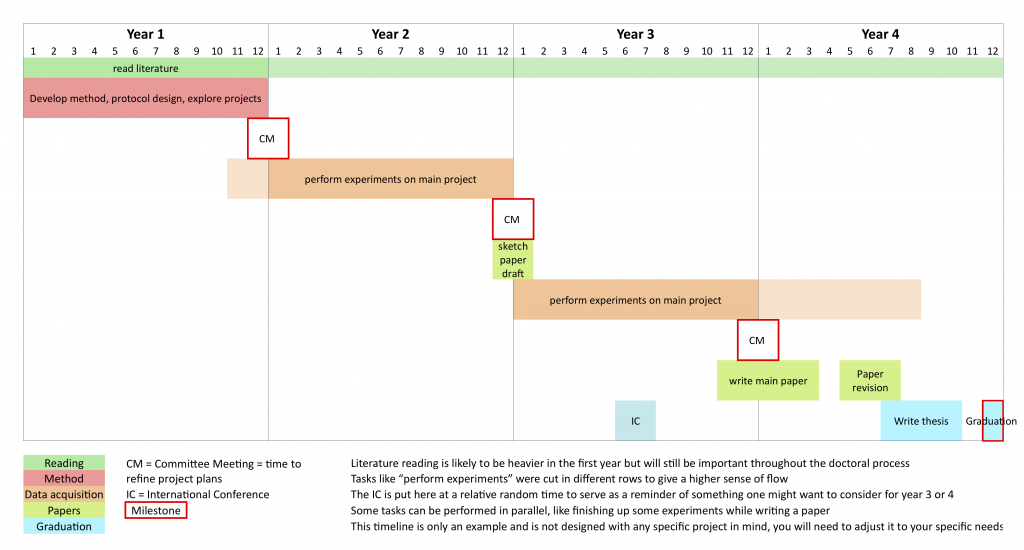
Because I want this to be a general example but also because it is such a long time scale, I kept the level of detail to the minimum to make it flexible and to avoid over-planning . The time for each task here is a very rough estimate, it is meant to be adapted to what you think is best for you or to what is expected in your doctoral program. Importantly, the uncertainty level is increasing with time . You don’t have to start writing a paper on the 11th month of your third year, maybe you’ll start much earlier or much later and it will be perfectly fine. This is just a broad overview to help visualize what the main steps are, but their exact length or when they should start will get clarified once you are closer to it.
2. Why draw a timeline?
To draw such a timeline and for it to be realistic and useful, you are going to ask very concrete questions, to yourself and to your supervisor , like what are the important steps, what are the milestones (technical milestones for developing a protocol, committee meetings, exams…), what are the risks, do you have only one project or do you have more, maybe one large risky project and one smaller safer project, and all other questions which are relevant to you.
Project management is effective if concrete questions are openly discussed. If your supervisor doesn’t bring up these questions with you, it might feel quite scary for you to ask for it. To help you find the courage to so, I believe that having such a timeline will provide you a highly visual and attractive medium to foster these discussions.
When I learned about Gantt charts at the beginning of my second year of PhD studies, I draw myself such a timeline, but I didn’t dare to discuss it with my supervisor. With no surprise things really didn’t work out the way I planned it. Supervisors by default have more experience than a junior PhD student so they should know better what is realistic, what is expected and how much upfront planning can be done depending on the project.
3. Guidelines for how to make & use the timeline throughout your PhD:
- I suggest that you draw a first version within the first two months of your PhD . But it’s never too late to start =)
- Take my example and adjust it , maybe you already have a clearly defined project, maybe not, maybe you don’t need to design a new method, maybe you’ve been included in someone else project with a clear short-term objective, maybe you think you should start drafting a paper earlier, go and adjust it to what feels right to you.
- Make sure to keep in mind that this chart is going to change many times until you graduate, stay flexible. This first timeline should only be an overview of the main steps which you expect in your PhD. It is here to give a direction, and if used regularly it can give a feeling of moving forward.
- Schedule a meeting with your supervisor to discuss this initial timeline ( still within the first two months ), ask the maximum of questions, clarify the maximum of points and make sure you both agree.
- Then whenever needed, go back to it and adjust it, maybe there is a great collaboration opportunity and for a few months you’ll be asked to put your main project aside and work fully on this collaboration, maybe your new protocol is working great and you’re already getting publishable data, maybe the protocol is not working well and you need to change strategy, how does it affect your timeline?
- Whenever a big change happens or whenever you feel too lost, schedule an extra meeting with your supervisor to specifically discuss the timeline and the long-term objectives. Hopefully it should give you a feeling of being on a track, even if it’s not the first one you pictured.
- I would suggest having such a discussion at least every 6 months .
This timeline is now a tool which is going to grow with you throughout your PhD. At first it is a rough overview of the main steps, if you keep it update with what you really do, at the end it will be a true overview of everything you’ve accomplished. Therefore, on top of guiding you through it, it will become a great tool to look back at your PhD experience once you’re finished.
Thanks for reading and I hope these ideas can help you :)
Make sure to read my previous article about Gantt charts where I explained that it can be used both for long-time scale like here, or on shorter time scale (like 2 months) with a higher level of detail.
Looking for more reading about project management for research? Have a look at the resource I made Project Management resource for PhD students and supervisors !
If you subscribe to the newsletter you’ll get my articles in full text directly in your inbox, no need to come on the website anymore, you might miss out my great pictures though… ^^
Thanks! Please check your email inbox or spam folder and click the link to confirm your subscription.
Related Posts

Skills, interests & values Self-Assessment Tools for PhDs

General info about Academic Funding for ECR in Switzerland

How to know which soft skills training is best for my career?

Checklist to clarify supervisor and PhD student expectations
Leave a reply cancel reply.
Your email address will not be published. Required fields are marked *
Subscribe to the newsletter
This site uses Akismet to reduce spam. Learn how your comment data is processed .
Rice University is now accepting applications for graduate study for 2025 admission. Click here to apply .
Aug. 29, 2024
Time management as a ph.d. student, by carly graverson. “i’m a ph.d. candidate, of course one of my most common phrases is ‘omg, i’m so busy’” - someone on tiktok, probably.

Let’s just say that being a student in a chemistry Ph.D. program isn’t all about synthesizing molecules and memorizing the periodic table. There are a lot of tasks we need to accomplish throughout our day! Between experiments in the lab, coursework, reading and writing research articles, and extracurricular activities, it's easy to feel like there aren't enough hours in the day.
Fortunately, you can manage your time effectively and maintain a healthy balance with the right tools and strategies. In this post we'll explore three essential tools—iCalendar/Google Calendar, Todoist, and the Pomodoro technique—that can help you stay organized, focused, and on top of your responsibilities.
1. Todoist: A Task Manager That Keeps You on Track
This is not an ad, but it should be. (Todoist, if you’re reading this, please hire me as your spokesperson.) Todoist is an app you can download onto your computer and phone and I promise you, my whole world changed once I started using this app. When you're juggling coursework, research, and campus involvement, it’s easy for smaller tasks to slip through the cracks. Todoist is a task management app that helps you keep track of everything, from small to-dos to large projects, and hits you with that sweet, sweet dopamine rush every time you hit the check mark.
There are three features in Todoist that make it an incredible tool that I started using in 2016 and have been loyal for the last 8 years:
- Project Labeling: As soon as you create a task, you can bin it (with color coordination) into a specific “project.” For example, almost every day I have a task to analyze data, which I have placed into my research project bin. Boom! Task organized.
- Due Dates: Have a task that is due for next month and you don’t need to start yet? Put it into Todoist with a due date! Once the time comes around to work on it, you’ll see it in your upcoming section so that you don’t forget. Have a task that you need to do every day? Once a week? Every six months? Set up recurring due dates. You’ll never forget to pay your Internet bill again.
- Prioritization: Sometimes you have a task that is urgent. Like it was due yesterday. Mark that task as Priority 1 to indicate it needs to be completed ASAP. Have something you want to complete, but it doesn’t have to be today? That’s Priority 3, baby. This feature allows you to be flexible in your scheduling, and plan your day around what’s most important.
Why it’s useful?
As grad students, we know that tasks and projects are constantly evolving. Todoist provides the flexibility to change a date or priority level even to add a task from anywhere at the click of a button.
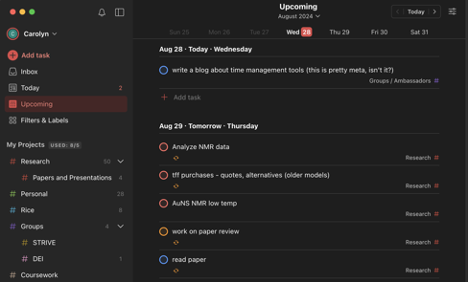
2. iCalendar and Google Calendar: A Powerful Duo for Scheduling
I have to start by admitting something. I am an Apple girlie. I’m sorry to all the PC users out there, and I also know that you think my credibility has decreased by 50%. Please stay with me, these tools are applicable to all types of operating systems. iCalendar (or Apple Calendar) is a calendar app pre-installed on all Apple devices. Why do I use it? I’m too lazy to download the Google Calendar app on my iPhone. Why it doesn’t matter? Its seamless integration with Google Calendar makes it even more powerful for managing a busy schedule.
What I use my calendars for:
- Everyone at Rice runs on a Google account! This means I can create an event in Google Calendar and invite folks to join, with the invite going straight to their email—or even create a shared calendar. How does it help? Less hassle for me and more buy-in from the group!
- Block scheduling! Most of my day is spent doing labwork, which can be wearing goggles and a lab coat while using chemicals or sitting at my desk reading journal articles. Either way, I need to know when and where to be. I use my calendars to block out time and include the location of where I need to be. This means I have all the information in one place when I have to go somewhere else.
- Color coding! You may have noticed by now that I am a Type A kind of person, and therefore, color coding keeps my life in check. By creating different activities by project time (correlating to my Todoist colors 💁♀️), I know why I have something on my calendar for that time.
Why It's Useful?
iCalendar and Google Calendar work together to give you a comprehensive view of your schedule, accessible from any device. This cross-platform capability ensures that you're always organized, whether you're on the go or sitting down to plan your week.
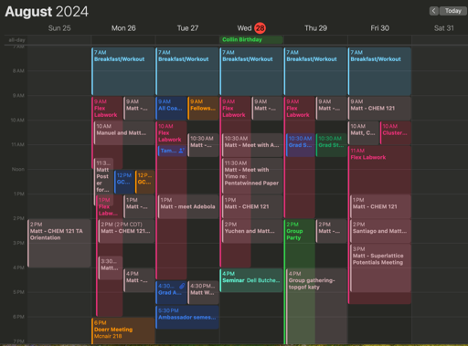
3. Pomodoro Technique: Boosting Focus and Productivity
I’ve written about this before, and I’ll write about it again. The Pomodoro Technique is a time management method designed to help you maintain focus and productivity. It involves working in short, intense bursts (usually 25 minutes), followed by a short break. For a busy PhD student, this technique can be particularly helpful during long study sessions or when doing never-ending “desk work.”
There are lots of apps and websites that make Pomodoring easy! I recommend pomofocus.io or you can go old school and use a kitchen timer. No matter how you do it, Pomodoring is simple.
Step 1: Work in 25-minute bursts focusing exclusively on one task at a time. Set a goal at the beginning of the burst for what specifically you are going to work on. Be hyperproductive and tune out until the timer goes off.
Step 2: Take a 5-minute break. I recommend stretching out your body and going for a short walk (down the hall, to grab some water, use the restroom, etc.). Don’t forget to set your timer!
Step 3: Repeat steps 1 & 2. After you’ve done this 4 times, take a longer break (I recommend a 30-minute one).
Why it’s Useful?
The Pomodoro Technique helps combat procrastination and burnout by breaking your work into manageable chunks. It can be especially beneficial when facing a daunting task, as it encourages you to take regular breaks and maintain a steady pace.
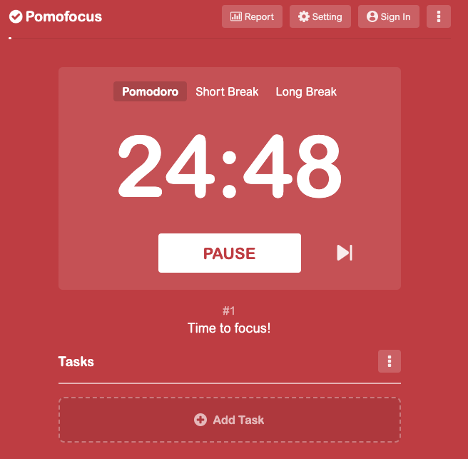
Building a Time Management System That Works for You
Grad school isn’t easy, so it’s important to schedule time for yourself. Make sure to spend time with friends and family. I literally schedule a time to work out on my calendar. Also, make sure to include tasks that benefit you! Do you like to draw? Make it a task you complete once a week! Find a system that keeps you happy, healthy, and productive!
About the author:
Carly Graverson is a native of Milwaukee, WI and is a Ph.D. candidate in Chemistry at Rice University. She earned her B.S. in Chemistry from Lewis University. Read more .
Further Reading:
How I get my life together with Notion—quite literally
Navigating Health Insurance in the U.S.: The Basics
Work-Life Balance in Graduate School
Thank you for visiting nature.com. You are using a browser version with limited support for CSS. To obtain the best experience, we recommend you use a more up to date browser (or turn off compatibility mode in Internet Explorer). In the meantime, to ensure continued support, we are displaying the site without styles and JavaScript.
- View all journals
- Explore content
- About the journal
- Publish with us
- Sign up for alerts
- CAREER COLUMN
- 05 December 2022
How to manage your time as a researcher
- Maya Gosztyla 0
Maya Gosztyla is a PhD student in biomedical sciences at the University of California, San Diego.
You can also search for this author in PubMed Google Scholar
It took less than two years in graduate school for me to burn out. I was spending long hours in the laboratory, yet I worried that I wasn’t making satisfactory progress. Overwork-induced exhaustion made me sloppy and impaired my productivity, creating a vicious cycle.
Access options
Access Nature and 54 other Nature Portfolio journals
Get Nature+, our best-value online-access subscription
24,99 € / 30 days
cancel any time
Subscribe to this journal
Receive 51 print issues and online access
185,98 € per year
only 3,65 € per issue
Rent or buy this article
Prices vary by article type
Prices may be subject to local taxes which are calculated during checkout
doi: https://doi.org/10.1038/d41586-022-04364-2
This is an article from the Nature Careers Community, a place for Nature readers to share their professional experiences and advice. Guest posts are encouraged .
Competing Interests
The author declares no competing interests.
Related Articles

From industry to stay-at-home father to non-profit leadership
Career Q&A 24 OCT 24

How I’m learning to navigate academia as someone with ADHD
Career Column 24 OCT 24

How to run a successful internship programme
Career Feature 23 OCT 24

How job-seeking scientists should walk the line between high-calibre and humble
Career Feature 21 OCT 24
Associate or Senior Editor, Nature Communications (Structural Biology, Biochemistry, or Biophysics)
Job Title: Associate or Senior Editor, Nature Communications (Structural Biology, Biochemistry, or Biophysics) Locations: New York, Philadelphia, S...
New York City, New York (US)
Springer Nature Ltd
Faculty (Open Rank) - Bioengineering and Immunoengineering
The Pritzker School of Molecular Engineering (PME) at the University of Chicago invites applications for multiple faculty positions (open rank) in ...
Chicago, Illinois
University of Chicago, Pritzker School of Molecular Engineering
Postdoctoral Position in Hematology-Oncology – Morizono Lab 2024-2025
The Morizono lab at UCLA is recruiting talented postdoctoral fellows with an interest in the development of gene therapy against HIV-1 infection.
Los Angeles, California
UCLA Department of Medicine - Division of Hematology-Oncology
Associate or Senior Editor (Environmental Social Sciences)
Title: Associate or Senior Editor (Environmental Social Sciences) Organization: Nature Communications Location: New York, Philadelphia, Jersey Ci...
Facility Administrator
APPLICATION CLOSING DATE: December 2nd, 2024 Human Technopole (HT) is an interdisciplinary life science research institute, created and supported b...
Human Technopole
Sign up for the Nature Briefing newsletter — what matters in science, free to your inbox daily.
Quick links
- Explore articles by subject
- Guide to authors
- Editorial policies

A typical PhD student schedule [Free template download]
A PhD student’s schedule is very different to anything that people have experienced in undergraduate or masters level education. Depending on the country that you are doing your PhD in, you may have classes alongside your dedicated research time. It is likely that you will work many hours more than a typical full-time job and may have some other administrative or teaching duties alongside your research.
A typical PhD student schedule involves turning up to the Department between 8 AM and 9 PM, and performing research activities during the day such as reading, writing, analyzing and reporting on literature and experiments.
The schedule of a PhD student also changes depending on the culture in your research group. Some supervisors require PhD students to turn up 6 to 7 days a week and spend up to 12 hours a day doing research. In my experience, this is very rare but a horror story that often gets passed around.
Most PhD supervisors are much more moderate when it comes to the commitments of their students and this article will cover the typical PhD student schedule and what you can expect if you enter a PhD.
A typical PhD daily schedule
A typical PhD student’s daily schedule will vary depending on the subject area, supervisor, and stage of your PhD. However, there are some things that are done consistently throughout the process of a PhD.
Here is a typical daily schedule of a PhD student.
The above timetable can also include:
- teaching activities
- group meetings
- departmental meetings
- other administrative tasks
- training, and much more
There are so many facets to a PhD students daily schedule that it changes almost every day depending on the demands of the research and the supervisor.
Here are some of the activities that a typical PhD student schedule contains. I have also looked at some of the specifics of different subject fields.
Common PhD student activities
A PhD is a training ground for academia.
Throughout a PhD, you will learn to perform the tasks of an academic such as reading literature, writing reports, analysing data, reporting and communicating your results, and presenting or attending different scientific talks and presentations.

Reading is the cornerstone of a PhD.
Learning to find the appropriate literature for your research and coming up with a method for reading, taking notes, and synthesising conclusions will be what sets out the top 10% of PhD students from the rest.
Many PhD students forget to set aside enough time for reading and it can severely impact their progress.
Reading wasn’t my favourite part of doing a PhD and I probably ignored it more than I should have. Nonetheless, ensuring you read regularly in and around your subject area will keep you up-to-date with the latest advancements in your field.
Supervisor meetings
Meeting regularly with your supervisor will keep your PhD on track.
Open communication between a PhD supervisor and the student ensures timely completion and help when things aren’t going so well.
My favourite frequency for supervisor meetings was fortnightly.
Every two weeks means I had enough time to plan, execute, and analyse data based on our previous meeting.
During supervisor meetings, you should share everything that has happened since the previous meeting. Importantly, you should share what has gone right, and wrong, and where you are going next. Head into supervisor meetings with solutions to problems and be sure to take criticism with an open mind.
Depending on your research area it may be more appropriate to meet up with your supervisor weekly to report your progress.
Writing during a PhD is often left until the last year but it is important to write regularly throughout your PhD.
Regular writing (even if it is just methods) will help you when you come to write your thesis or peer-reviewed paper.
During a PhD there are often different writing milestones that you need to achieve including:
- literature reviews
- conference abstracts
- technical reports for collaborators
- progress reports for grant funders
- peer review paper writing
- thesis or dissertation writing
As you can see, there are lots of different times when a PhD student will be set at their desk writing up results for a variety of audiences.
Formulating your own ideas and contributing to an academic field means analysing data and literature.
Many hours of PhD student time are dedicated to the analysis of other people’s ideas, data collected in the lab, and stress testing their own hypotheses.
Analysis is another cornerstone of a PhD.
Reporting your research findings is incredibly important. Communication is what keeps research rolling.
There are several ways that PhD students have to report their results. They may be reporting to their supervisor, collaborators, others in their field, all the general public.
One thing I loved about my PhD was the ability to communicate my research to a general and broad audience.
Writing reports, producing presentations, and writing performance reports for grant funding bodies are all important parts of a PhD student’s typical schedule.
Group/department meetings
After starting my PhD I was amazed at the amount of group and departmental meetings that I was expected to attend.
They seem to always be scheduled at a really inappropriate time and can cut your working day in half. Nonetheless, they are an important part of the PhD process.
Group meetings are for people in the same research group to share their findings and help each other with their work.
Departmental meetings may have an external presenter (from another university or Department) and so they must be well attended to give the appearance of an active and vibrant research community. You’ll get loads of emails reminding you about a meeting if there is a guest lecturer.
Topic-specific activities
Depending on the topic of your PhD you may have some other regular activities.
Humanities students will spend a fair amount of time in the library and reading academic texts. Looking for rare books, papers, and collections in the deepest darkest areas of the library are where you will find many humanity PhD’s.
Science, technology, engineering and maths PhD students will spend a lot of time performing experiments in a laboratory environment.
They will also help train masters and undergraduate students on particular instruments or techniques and be responsible for Occupational Health & Safety in the labs.
Because of the nature of a stem PhD, a science, technology, engineering or maths PhD student will spend many hours alone working in the depths of a university lab.
Social Sciences
Social sciences are likely to be conducting research using surveys or interviews and handling large amounts of data.
Making sure that they have ethical approval for their research can take a bit of time too.
Collecting enough data through questionnaires and surveys is always an issue for social science PhD students so they will be out collecting data as often as possible. They may have research assistants and undergraduates that can help them with their work.
Number of hours that PhD students work
There is no one answer to the number of hours that PhD students work. The number of hours is determined by the culture of the lab and the stage of the PhD.
On average a PhD student will work 40 – 60 hours per week.
Most will try to keep a regular 9 – 5 schedule whilst others will work when they are at their most productive. I know of one PhD student who would come into the lab at 5 PM and stay until one or two in the morning.
The great thing about doing a PhD is that you quite often get to choose your schedule. You may want to work early in the morning or late at night depending on when you feel most awake.
Also, you get to choose where you perform your PhD studies, as long as you do not need to be in a lab or present in the department.
What does a great PhD schedule look like?
A PhD student’s schedule can easily become unproductive if they go with the flow.
I believe that a strong daily schedule and commitment to at least two hours of focused work every single day will lead you to a much more rewarding and efficient.
I released a YouTube video that talks about the components of a failproof PhD daily schedule and you can watch it here:
I also include links to my daily schedule template that you can also get for free by clicking the image below:

Wrapping up
This article has been through everything you need to know about the typical PhD student schedule and how many hours you are expected to be in your office or department.
Having a frank conversation with your PhD supervisor will allow you to understand their expectations of their PhD students. It varies wildly from supervisor to supervisor – so it’s very good to be on the same page as soon as you start.
Remember to download my free daily schedule template to boost your productivity!

Dr Andrew Stapleton has a Masters and PhD in Chemistry from the UK and Australia. He has many years of research experience and has worked as a Postdoctoral Fellow and Associate at a number of Universities. Although having secured funding for his own research, he left academia to help others with his YouTube channel all about the inner workings of academia and how to make it work for you.
Thank you for visiting Academia Insider.
We are here to help you navigate Academia as painlessly as possible. We are supported by our readers and by visiting you are helping us earn a small amount through ads and affiliate revenue - Thank you!

2024 © Academia Insider


- Youth Program
- Wharton Online
Wharton Stories
What to expect from a phd schedule.
Take a look at a current student’s schedule and get the insider perspective from doctoral students and coordinators on what to expect from a PhD schedule.
The life of a PhD candidate can be stressful as you adjust to a rigorous academic and research schedule. Penn and Wharton offer a variety of resources to help support you in the transition to PhD life.
Wharton’s sense of community offers a level of comfort when reaching out to faculty as well as fellow students to help solve problems. Doctoral students and coordinators give the insider view on what to expect from a PhD schedule.
Class and Research First
The first two years of a PhD program are mainly made up of classes and the beginning stages of research. Deborah Small , the doctoral coordinator for the Marketing program , said, “It starts with heavy duty coursework and a lot of specific requirements. At the end of your first year, there are qualifying exams on all the core marketing courses. Second year they still have a lot of coursework to do, but more of that is elective with a focus more on their interests. During those years they’re expected to get started on research.”
In addition to taking classes and getting started with research, the Marketing program requires students to write two papers. The first research paper is due at the end of the second year, the other is due at the end of the third year.
The Real Estate and Business Economics and Public Policy programs run like the Marketing program. Fernando Ferreira , coordinator for the programs, said, “During the first year they complete six core courses. In the second year, the focus shifts to field courses and to independent research. They have two professors advising them in that year.”
After completing the main courses, students shift to conducting independent research. For REAL and BEPP students this means writing three dissertation chapters during the third and fourth years.
Time for Conferences and Seminars
Because coursework is usually completed by the second half of the program, there’s time for students to attend lectures and seminars. Andrea Contigiani , a fifth year student in the Management program, said, “In my fourth year, I usually attended a seminar around lunchtime. Wharton has an incredible seminar series throughout the year, with a good seminar happening almost everyday. Occasionally, I attended other events, like MBA events or speaker series. I then go back to research for most of the afternoon.”
Prof. Small said, “Students are expected to actively participate in seminars and activities. They’re also encouraged to go to academic conferences and try to present their work at those conferences. It is similar to the expectations of being a faculty member, minus teaching.”
Classes take up the majority of the first two years of the programs. When the focus then switches to research, you’re expected to work independently. Sometimes that can be intimidating. You become your own boss, which is an adjustment from being told what to do and when to do it.
So how do you manage it? Get advice from students and coordinators.
Posted: August 4, 2017
- Work/Life Balance
Doctoral Programs
Matthew caulfield.
Hometown Ocean City, New Jersey
Concentration Management and Legal Studies & Business Ethics
Doctoral Stage Second Year
Typical Day at a Glance
8:30 am Wake up and get ready for the day
9:15 am Get to PhD Offices, respond to emails, check philosophy blogs and read news
10:30 am Journal article readings
11:30 am Meet with advisor
12:00 pm Attend departmental seminar speaker and lunch
1:30 pm Attend Wharton Social Impact Doctoral Community meeting
3:00 pm Attend business ethics seminar
5:00 pm Read for class
7:00 pm Meet with nonparametric statistics study group
8:00 pm Complete homework
12:00 am Go home
1:00 am Bedtime
What is your favorite part about Wharton?
First, the faculty are excellent. They are often leading experts in their fields, and they can offer advice that would be hard to find elsewhere.
Second, the other PhD students are just as passionate about research as you would hope. A huge part of my scholarly development has been due to the discussions I have had with other graduate students.
Third, the Wharton name can offer you serious advantages. In the course of research, I think industry practitioners as well as other academics have been more willing to talk or correspond with me because I am a graduate student at Wharton.
Related Content

How This MBA/MPA Student Connected with Classmates Through the Core

How This Student is Using Wharton’s Bicoastal EMBA Program to Expand His Network

A Survival Guide for Your First Term in Wharton’s EMBA Program

How a Former Marine Took on a Finance Role at The Washington Post and a Volunteer Role in Refugee Resettlement

How This Professor Goes the Extra Mile to Build Connections Inside and Outside the Classroom

Building Community and Connection with Women in Business Academia

How This Wharton Student Is Making the Most of His Time at Penn

Mission Impactful: Using a Legal Skillset to Research Impact Investing

4 Questions with Vice Dean Howie Kaufold

How This PhD Student Took Advantage of Wharton’s Resources and Created a New Pipeline for Women in Academia

Postcards From The South Pole

A Nontraditional Applicant Gets the Call

How Prof. Stephanie Creary Works Towards Inclusion in Research, Teaching, and Wharton Culture

Why Prof. Peter Fader Loves Teaching Executive MBA Students

How Business School Allowed This MBA to See His Startup Experience Through a New Lens
- Skip to primary navigation
- Skip to main content
- Skip to footer
Tress Academic


#85: Planning your PhD workday
April 27, 2021 by Tress Academic
Are you like Hanna, one of our course participants, who asked herself how she could structure her PhD work days? Are you looking for any proven strategies how and when to plan your days? In this blogpost, we show you 6 steps for planning a great workday – spare time included. Deciding how you spend your day has a huge influence on your overall well-being and performance.
In our courses for PhD candidates and ECRs, we ask participants to come up with suggestions for blog posts about topics that are bothering them, and for which they would like input from us. The suggestion for this week’s blogpost comes from Hanna, a PhD candidate, who sent us the following note:
Dear Bärbel and Gunther,
Thanks for your support. It is reassuring to know that there are actually people who care about our lives as doctoral candidates.
One question I come across every single day is: How to structure my day? And when should I do it? Are there any commonly used strategies, how to shape or divide a researcher’s working day into sensible parts? And to be honest I would love to find a way that REDUCES the number of decisions per day, because I’m convinced those are the most time and brain-capacity consuming parts in a scientist’s life.
Any advice would be much appreciated and I’m pretty sure that I’m not the only one who’s desperately looking for a good way of self and work management.
Best, Hanna
So, this is what I’ll help you with in this blog post: I will give you a brief guideline on how to structure your work day so that you can use your brain-capacity on your research. I’ll describe how you can plan your day in 6 steps, and in order to make application even easier, I’ve thrown in a free worksheet ‘My PhD workday’ – which you can fill-in in 5 min. every morning and plan your day!
There are many ways you can plan a day, and in our online programme PhD Success Lab , I teach participants a sophisticated system which is embedded in a long-term plan for their PhD project. If you are curious to hear more about how to influence your PhD Success, join us for our next free live webinar for PhD candidates
The most important thing is THAT you plan, and HOW you do it comes second. Using the guidelines in this blogpost can be a perfect start, and you’ll quickly find out what works best for you ,and can then fine-tune your technique.

Why plan your day?
1. You reflect on your work-habits
Planning your day means that you are reflecting on your work habits and realizing how to improve. That is a huge plus in itself already. It is the opposite of arriving at the institute in the morning, starting your ‘auto-pilot,’ and just going with the flow. If you plan your day, you are intentional about how you want to spend that day. Once it has passed, you can reflect on how it went, and improve your system and work-habits over time.
I have planned my days since I was a PhD candidate and it has helped me not only to complete my PhD on time, but to move forward in an enjoyable and focused way throughout my career. To this day, I plan every single working day and even my weekends so I can make the most of these as well.
2. Better focus on your goals
If you plan your workday, you have to make a decision about what to work on and what not to work on. That thought process includes reflecting on your strategic goals and what you want to achieve (e.g. PhD completion). What you work on during the day should align with your strategic goals. Pick tasks that will help you achieve your goals. That is why planning your day should be embedded in smart goal-setting for your PhD.
See our blogposts #2: So you want to finish your PhD on time? and #47: Plan your project – save your PhD ! including our free QUICK GUIDE ‘Planning your PhD project’
3. You decide what is most important
Important is what moves the needle! Important tasks are always those which help you achieve your goal. Planning your workday forces you to make a decision every single day on how you are going to move forward in your PhD. Doing this systematically every day accelerates your process and targets your efforts.
4. You’ll have a better life!
That goes for work and your private life! Planning your day helps you to be more efficient during your working hours so you can enjoy yourself afterwards. People who plan their days feel more in control and achieve more. That results in less stress, less anxiety, and more joy!
Planning your day also means planning your activities before and after work, as well as ‘planning’ for enjoyable weekends and holidays, so that you achieve greater happiness overall. As the research by Achor (2012, 2014) shows, happiness precedes success. People who have a more balanced life achieve more and perform better.
Since there are so many PhD candidates who struggle with mental health issues, planning your day and focussing on a more balanced life is an important stress prevention strategy.
When to plan your day?
There are two options: The evening before, and in the morning right before you start working. I prefer the latter, and I am convinced it works better. Still, some people swear by doing it the evening before. I think spending the first 5-10 minutes deciding what you’re going to do is a great way to start your day. Your mind is clearer in the morning, and your energy level is higher, which also helps with making confident decisions regarding your daily tasks and duties.

6 steps to planning your work day
Step 1: Decide when your day will end
Yes, the first thing to decide is when you’re going to stop working. That gives you the information on how many hours you have available to work, and how much time you’ll have available in the evening to do something else.
Step 2: Plan your breaks
Plan for one good lunch break of about 1h, as well as 2-3 shorter breaks throughout the day. Think about how you are going to spend your breaks so that they are energising and enjoyable. It is amazing what you can fit into a 15 min. break, not to mention during a 1h lunch break – apart from eating, of course. You can easily fit in a short, brisk bicycle ride, an enjoyable talk to a friend, reading a chapter in a book, or some motivating socialising with colleagues you like.
Step 3: Plan your after hours
What are you up to after work? Sure for all of us, there are a few chore around the house, but really think about what you would LIKE to do in the evening. As PhD candidate Agata says on the University of Nottingham’s blog ‘Student Life’ : “There is no better booster of your time management than having plans after work.”
Browse your mental list of activities that you love doing and make a decision. Anything goes – as long as you look forward to it! Balance sports activities with socialising and other things over the week! Best to write it down.
Step 4: Pick your tasks
In this step you decide WHAT you are going to work on during the day. That requires some level of awareness as to what projects you are currently working on, and what the key outputs for your PhD are. This is something I teach my participants to recognize during the PhD Success Lab , so they have absolute clarity on their key outputs.
There are many ways to pick tasks for the day. I suggest you keep a strict focus on those that are most important for you in order to achieve your goals. Select the 3 to 5 most important tasks that will help you to complete your PhD. What among all your tasks are the 3 to 5 that will help most to move your PhD ahead? Asking yourself that question every morning is a game changer, as it will not only help you to focus, but avoid postponing important stuff day after day.
Step 5: Estimate duration
For the tasks that you picked, quickly decide how much time you want to spend on each one. Most activities you work on as a PhD candidate are real biggies – like analysing data, writing a research paper, coding, or designing an experiment. In theory, you could do one after the other, but practically, that doesn’t work for any of us. So you’ll always have to perform multiple tasks during a day to move ahead. It is really smart to decide how long you are going to work on each task (I mostly work in 1-2h slots). That helps you to process a couple of tasks every day, one after the other. It is also a great way to avoid procrastination or getting stuck.
Step 6: Schedule your tasks
Now that you know WHAT you are working on (step 4), decide WHEN to do what. If you have the entire day at your disposal, go as you like. If you have lab duties in the morning, schedule your afternoon. If you have to teach in the afternoon, schedule the time before and afterwards.
One strategy that works best for most scientists I have worked with is the following: Start with the most important, most difficult, or most challenging task in the morning. Then work your way down to the less important ones. Your confidence and energy is always higher in the morning, and knowing that you have completed the most tricky stuff early on is super motivating.
Apart from that, batching together smaller tasks, e.g. e-mail correspondence, is a good strategy. That way, you don’t spend 5 min answering one e-mail here, and 10 min answering another there, but instead you reserve 30 min. e.g. after lunch to work through all your e-mails. For a nice example of using batching, see also Ciara Feely on How I Plan My Day as a PhD Student .
Planning your days influences your PhD progress
Planning your day can make a huge difference to how you work on your PhD, and your overall performance. By planning your day, you become much more conscious of what your important activities are, and you’ll also be much more intentional with how you invest your time. If you set your agenda in the morning, you are also less likely to say ‘yes’ to irrelevant side-activities or distractions that come your way. Try it out – you’ll be amazed!
If you want to hear more about how to complete your PhD in a smoother and less stressful way, join our free live webinar for PhD candidates .
Related resources:
- Free worksheet “My PhD workday”
- SMART ACADEMICS blog post #2: So you want to finish your PhD on time?
- SMART ACADEMICS blog post #47: Plan your project – save your PhD ! free QUICK GUIDE ‘Planning your PhD project’
- Ciara Feely: How I plan my day as a PhD student
- University of Nottingham’s blog ‘Student Life’: 6 time management tips for PhD students.
- Achor, S. 2012: Positive Intelligence. Harvard Business Review 90(1-2):100-2, 153.
- Achor, S. 2014. Positive Intelligence. Change your relationship with stress. In: HBR-Guide to managing stress at work. Boston: Harvard Business Review Press, 139-146.
More information
Do you want to successfully complete your PhD? If so, please sign up to receive our free guides.
Photograph by Vlodomir Hryschenko at unsplash.com
© 2021 Tress Academic
Understanding and solving intractable resource governance problems.
- Conferences and Talks
- Exploring models of electronic wastes governance in the United States and Mexico: Recycling, risk and environmental justice
- The Collaborative Resource Governance Lab (CoReGovLab)
- Water Conflicts in Mexico: A Multi-Method Approach
- Past projects
- Publications and scholarly output
- Research Interests
- Higher education and academia
- Public administration, public policy and public management research
- Research-oriented blog posts
- Stuff about research methods
- Research trajectory
- Publications
- Developing a Writing Practice
- Outlining Papers
- Publishing strategies
- Writing a book manuscript
- Writing a research paper, book chapter or dissertation/thesis chapter
- Everything Notebook
- Literature Reviews
- Note-Taking Techniques
- Organization and Time Management
- Planning Methods and Approaches
- Qualitative Methods, Qualitative Research, Qualitative Analysis
- Reading Notes of Books
- Reading Strategies
- Teaching Public Policy, Public Administration and Public Management
- My Reading Notes of Books on How to Write a Doctoral Dissertation/How to Conduct PhD Research
- Writing a Thesis (Undergraduate or Masters) or a Dissertation (PhD)
- Reading strategies for undergraduates
- Social Media in Academia
- Resources for Job Seekers in the Academic Market
- Writing Groups and Retreats
- Regional Development (Fall 2015)
- State and Local Government (Fall 2015)
- Public Policy Analysis (Fall 2016)
- Regional Development (Fall 2016)
- Public Policy Analysis (Fall 2018)
- Public Policy Analysis (Fall 2019)
- Public Policy Analysis (Spring 2016)
- POLI 351 Environmental Policy and Politics (Summer Session 2011)
- POLI 352 Comparative Politics of Public Policy (Term 2)
- POLI 375A Global Environmental Politics (Term 2)
- POLI 350A Public Policy (Term 2)
- POLI 351 Environmental Policy and Politics (Term 1)
- POLI 332 Latin American Environmental Politics (Term 2, Spring 2012)
- POLI 350A Public Policy (Term 1, Sep-Dec 2011)
- POLI 375A Global Environmental Politics (Term 1, Sep-Dec 2011)
Planning the timeline and progress of your doctoral dissertation (or Masters/undergraduate thesis)
One of my PhD students lamented this week with me that she had a lot to juggle (taking children to and from schools and to and from activities, etc.) and that she needed a strategy to make her research move forward. I had been planning to write this blog post for a while, since this is the one question I get asked the most by doctoral students (“ how do I plan my unstructured time over the summer ” being the other one).
Do you have one like this but for dissertations? From how to pick your topic to how to plan your chapters or something similar? 🙂 — Mariana Miguélez (@Scherezadda) March 27, 2018
I had to rush to get this blog post done because my student is 2 years away from the deadline her university has imposed for her thesis defence, which is why I sat down with her last night to show her how I do things. I have two other PhD students at exactly the same stage (2 years to defense) so I figured I might as well finish this blog post.
While I’ve suggested that people read one (or more) of the books that I’ve digested myself (check my Writing a Doctoral Dissertation page), one of the main things I teach my students is how to apply backcasting techniques to develop a project plan . I was trained as a project manager, and I worked in that capacity for a number of years, so I understand exactly the kind of work that needs to be done to develop good project plans.
There are a few resources for students, which I mentioned on Twitter earlier today (October 5th, 2018), many of which are listed in the thread that will appear if you click anywhere on the tweet shown below. Thanks to everyone who responded to my query, though I think many of them were professors describing their own process, which is not the same as having a doctoral dissertation (ONE GOAL) to finish in X number of years. My students are doing theirs in the 3 papers’ model, which is a bit closer to the day-to-day life of a professor, but still, the trajectory is quite different. Anyhow, here are some recommendations (click on the tweet to expand the entire thread).
Everyone: one of my PhD students today asked me how to plan her day/week/month/time table. Can you tweet me your process before I tweet/thread mine? Thanks! (I'm off to dinner because I've already written 460 words). — Dr Raul Pacheco-Vega (@raulpacheco) October 3, 2018
The core planning strategy I would thus recommend doctoral, masters and undergraduate students is to engage in a combination of Gantt Chart Design and project backcasting techniques .
The Gantt chart is a technique I learned in graduate school when I took project management courses. This is a hypothetical Gantt chart for my doctoral student, covering about 15 months.

What I suggested to her was to use backcasting techniques to plan backwards from her goal (PhD thesis defense) to intermediate goals. This post explains how I backcast a project https://t.co/wAmyejeoa0 since her dissertation is a 3-papers one, I suggested she uses that model. — Dr Raul Pacheco-Vega (@raulpacheco) October 5, 2018
For Gantt Chart templates, you can see Dr. Emma Sheppard’s here.
Project planning for research students https://t.co/ku7shfB5uL excellent template by @DrESheppard which may be of interest to students from undergrad, Masters and PhD levels. pic.twitter.com/ujQVlYocH7 — Dr Raul Pacheco-Vega (@raulpacheco) September 3, 2018
Here is another resource that you can use to create Gantt Charts.
To do Gantt charts you can use Excel or Microsoft Project (which is how I learned to do them), or Visio (which has been bought by the evil company and is now Microsoft Visio). I liked this detailed approach that uses connectors between milestones and tasks https://t.co/xVjNmM1q7c — Dr Raul Pacheco-Vega (@raulpacheco) October 5, 2018
Hugh Kearns and Maria Gardiner have lots of resources on their site, and have published books on this as well.
I just realised @ithinkwell and @ithinkwellHugh have excellent FREE templates on their website https://t.co/Q859jNiM6Q for PhD students to plan their trajectories, etc. #PhDChat (thanks, Maria and Hugh!) — Dr Raul Pacheco-Vega (@raulpacheco) October 5, 2018
Dr. Patrick Dunleavy’s book “ Authoring a PhD ” is incredible and really does help students who are planning their PhD process. I recommend it to my own doctoral students.
And of course I would be remiss if I forgot to recommend Dr. Ellie Mackin Roberts (my coauthor for a forthcoming book on research planning) and her website. Ellie has A TON of downloadable printables for you to plan your own research. She is fantastic.
Both for doctoral students AND for post-PhD folks, my coauthor Dr. @EllieMackin has an entire website for research planning https://t.co/unXMqmaf2Z she offers FREE downloadable printable templates that you can use to plan your own research. — Dr Raul Pacheco-Vega (@raulpacheco) October 5, 2018
In the end, the process I recommended to my students and that I do myself is – set a target defense date and then work backwards and plan tasks, activities, and intermediate goals. For example, I have asked my students to plan submission dates for their 3 papers (to be sent to journals) and then schedule fieldwork and data analysis accordingly. This process has worked well, and I hope my description of the process will help my students and others!
In a subsequent blog post I’ll describe how to go from long-term goals (submit paper X by Y date) to daily tasks. That blog post will definitely apply to doctoral students and post-PhD folks.
If you liked this blog post, you may also be interested in my Resources for Graduate Students page, and on my reading notes of books I’ve read on how to do a doctoral degree.
You can share this blog post on the following social networks by clicking on their icon.
Posted in academia .
No comments
By Raul Pacheco-Vega – October 6, 2018
0 Responses
Stay in touch with the conversation, subscribe to the RSS feed for comments on this post .
Leave a Reply Cancel Some HTML is OK
Name (required)
Email (required, but never shared)
or, reply to this post via trackback .
About Raul Pacheco-Vega, PhD
Find me online.
My Research Output
- Google Scholar Profile
- Academia.Edu
- ResearchGate
My Social Networks
- Polycentricity Network
Recent Posts
- The value and importance of the pre-writing stage of writing
- My experience teaching residential academic writing workshops
- “State-Sponsored Activism: Bureaucrats and Social Movements in Brazil” – Jessica Rich – my reading notes
- Reading Like a Writer – Francine Prose – my reading notes
- Using the Pacheco-Vega workflows and frameworks to write and/or revise a scholarly book
Recent Comments
- Raul Pacheco-Vega on Online resources to help students summarize journal articles and write critical reviews
- Muhaimin Abdullah on Writing journal articles from a doctoral dissertation
- Muhaimin Abdullah on Writing theoretical frameworks, analytical frameworks and conceptual frameworks
- Joseph G on Using the rhetorical precis for literature reviews and conceptual syntheses
- Alma Rangel on Improving your academic writing: My top 10 tips
Follow me on Twitter:
Proudly powered by WordPress and Carrington .
Carrington Theme by Crowd Favorite
- Interesting
- Scholarships
- UGC-CARE Journals
12 Expert Tips for Organizing Your PhD Research work
Revolutionize Your Research Workflow with These Expert Organization Tips
The journey of pursuing a PhD can be an exciting and rewarding experience, but it can also be overwhelming at times. One of the keys to completing the PhD degree successfully is being organized and managing your time effectively.
Organizing PhD work can be a challenging task, but with proper plan and execution, one can effectively manage their time and progress. In this article, iLovePhD presented twelve practical tips and strategies to help you stay organized and productive during your PhD journey.
Whether you’re just starting or in the middle of your PhD journey, these tips will help you stay on track and make the most out of your time as a research scholar.
Tips to Revolutionize Your PhD Research Workflow
1. set clear goals.
The first step in organizing your PhD work is to set clear goals for yourself. Define the objectives of your research. Develop a clear and realistic plan for your PhD work, including milestones and deadlines for each task.
2. Develop a research plan
Once you have set your goals, develop a research plan that outlines the steps you need to take to achieve them. Your research plan should include the research questions you want to answer, the methods you will use to collect data, and the analysis techniques you will use to draw conclusions.
3. Create a schedule
Create a schedule that outlines the tasks you need to complete each week and the deadlines for completing them. Make sure you allocate enough time for each task and don’t forget to include time for reviewing and revising your work.
4. Use a project management tool
Consider using a project management tool like Trello, Asana, or Notion to help you organize your tasks, set deadlines, and to help you to stay on track.
5. Prioritize your tasks
Prioritize your work based on the importance and urgency of each task. This will help you to focus on the most critical work first.
Also Read: Suffering PhD Scholars in Academia
6. Break down large tasks into smaller ones
Divide large tasks into smaller, more manageable tasks. This will help you to work more efficiently and achieve progress more quickly.
7. Manage your time effectively
Manage your time effectively by allocating specific time slots for each task. Avoid multitasking, which can reduce your productivity and increase your stress levels.
8. Stay organized
Keep your work organized by using folders, files, and notes. This will help you to easily find and access your work and prevent you from losing important documents. Use tools like Zotero or Mendeley to manage your references.
9. Communicate with your supervisor
Regular communication with your supervisor is crucial for staying on track with your PhD work. Schedule regular meetings with your supervisor to discuss your progress, get feedback, and ask for help if needed.
10. Seek support
Seek support from your peers, and other professionals when necessary. This can help you to overcome challenges and move forward in your research
11. Stay motivated
Stay motivated by setting realistic goals for yourself and celebrating your achievements.
12. Take breaks
Taking regular breaks is important to avoid burnout and stay focused. Make sure to schedule time for self-care. Engage in activities that you enjoy to maintain your mental health and well-being.
Organizing your PhD work is essential to ensure that you can work efficiently and effectively toward your research goals. It is an ongoing process, and you may need to adjust your plan as you go along.
50 Tips to Oranize PhD Research Work
- Develop a system for managing your data.
- Use a literature review matrix to stay organized.
- Prioritize self-care to avoid burnout.
- Use a task management tool to stay on top of deadlines.
- Keep a research journal to track progress and ideas.
- Stay organized by using folders and labels.
- Create a clear and concise research plan.
- Break larger tasks into smaller, manageable ones.
- Use a citation management tool to keep track of sources.
- Take breaks to avoid fatigue and maintain focus.
- Back up your data regularly.
- Use templates for reports and presentations to save time.
- Stay on top of emails and communication.
- Use an agenda or planner to schedule meetings and deadlines.
- Collaborate with others to share ideas and resources.
- Use software tools to help automate repetitive tasks.
- Take advantage of library resources and research guides.
- Use charts and graphs to visualize data.
- Use cloud-based storage to access your work from anywhere.
- Stay organized by color-coding notes and files.
- Use checklists to ensure you complete all necessary tasks.
- Make time for exercise and other forms of self-care.
- Keep track of important dates and events.
- Break down complex information into easy-to-understand summaries.
- Use mind-mapping software to brainstorm ideas.
- Take notes during meetings and discussions.
- Create a filing system for physical documents.
- Use an annotation tool to mark up documents.
- Set aside designated time for writing.
- Prioritize your most important tasks first.
- Use keywords to organize your literature reviews.
- Stay focused by eliminating distractions.
- Use a backup system to protect your work.
- Use templates to maintain consistent formatting.
- Utilize peer feedback to improve your work.
- Stay up-to-date on research trends and developments.
- Use time blocking to schedule your day.
- Maintain a consistent schedule to establish a routine.
- Use a timer to help with time management.
- Stay organized by using bookmarks and tags.
- Make use of keyboard shortcuts to save time.
- Take breaks to stretch and move your body.
- Stay hydrated and well-rested for optimal productivity.
- Use online forums to connect with other researchers.
- Take care of your mental health to stay focused and motivated.
- Keep your workspace clean and clutter-free.
- Use a dictation tool to speed up your writing.
- Create a backup plan in case of unexpected issues.
- Use technology to stay organized on the go.
- Celebrate your progress and accomplishments along the way!
By implementing the tips discussed in this article, you can establish a structured approach to your work that will help you stay focused and motivated. Be flexible and keep working towards your goals, and you will be on your way to completing your PhD successfully.
- academic success
- data management
- Literature Review
- productivity
- research journal
- research organization
- research work
- task management
Top 7 Artificial Intelligence (AI) Tools in Scientific Research 2024
Why mahatma gandhi never won the nobel prize for peace, nomination and selection of nobel prize laureates, most popular, ugc phd excellence citation to recognize outstanding research, strategies to end the science nobel drought in india, the roadmap to nobel prize-worthy research, annas archive – download research papers for free, ethnographic research examples: exploring cultures through immersive study, advantages and disadvantages of qualitative research methodologies, 150+ cutting-edge chemical engineering research topics, best for you, 24 best online plagiarism checker free – 2024, what is a phd a comprehensive guide for indian scientists and aspiring researchers, popular posts, unethical journal publications, top 100 journal publications in the world 2024, top 488 scopus indexed journals in computer science – open access, popular category.
- POSTDOC 317
- Interesting 259
- Journals 236
- Fellowship 134
- Research Methodology 103
- All Scopus Indexed Journals 94
Mail Subscription

iLovePhD is a research education website to know updated research-related information. It helps researchers to find top journals for publishing research articles and get an easy manual for research tools. The main aim of this website is to help Ph.D. scholars who are working in various domains to get more valuable ideas to carry out their research. Learn the current groundbreaking research activities around the world, love the process of getting a Ph.D.
Contact us: [email protected]
Google News
Copyright © 2024 iLovePhD. All rights reserved
- Artificial intelligence
Creating awesome Gantt charts for your PhD timeline
It’s a common scenario: you have never heard about Gantt charts. Then, when writing a PhD application or planning your PhD timeline for the upcoming years, someone suggests: You should include a Gantt chart! No need to worry. Here is all you need to know about Gantt charts for your PhD timeline.
What are Gantt charts?
Why are gantt charts frequently used for phd timelines, what information is included in gantt charts for phd timelines, creating a phd timeline gantt chart in microsoft excel, creating a phd timeline gantt chart in microsoft powerpoint, creating a phd timeline gantt chart in a microsoft word, creating a phd timeline gantt chart with an online tool, best gantt chart template for phd timelines in microsoft excel, best gantt chart template for phd timelines in microsoft powerpoint, best gantt chart template for phd timelines in microsoft word, gantt chart phd timeline example in microsoft excel, gantt chart phd timeline example in microsoft powerpoint, gantt chart phd timeline example in microsoft word.
A Gantt chart is a visual representation of a project schedule and a widely used tool in project management.
Gantt charts belong to the family of bar charts. In a Gantt chart, bars depict different project tasks. The length of each bar is proportionate to the task duration and indicates both start and finish dates.
Gantt charts are named after Henry Gantt. He lived from 1861-1919 and developed these types of charts as part of his work as a management consultant.
A Grantt chart is a great way to provide an overview of project tasks, activities and milestones.
Gantt charts are frequently used to illustrate PhD timelines because doing a PhD essentially means creating, managing and implementing a project with many components over several years.
Therefore, Gantt charts are popular tools among (aspiring) PhD students.
They are often featured in PhD proposals: Through visual representations, Gantt charts help communicate milestones, plans and estimated task durations.
Furthermore, Gantt chart PhD timelines allow PhD students to track their progress. They can also help PhD students to stay on track with their work.
You may also like: How to develop an awesome PhD timeline step-by-step
Gantt charts can include all kind of information, based on the specific project they are focusing on. When it comes to Gantt chart PhD timelines, there are several elements that are commonly featured:
- Extensive PhD proposal/plan
- Data collection
- Experiments
- Data analysis
- Writing plan
- Publications
- Conferences
- Courses/Coursework
Of course, every PhD project is unique. This uniqueness should be reflected in your Gantt chart. For instance, your Gantt chart PhD timeline will look different if you write a PhD based on articles or if you write a monograph .
For a PhD based on published articles, different bars in a Gantt chart PhD timeline could for example represent individual papers. For a monograph, it may be smarter to focus on research stages.
How do you create a Gantt chart for your PhD timeline?
Unfortunately, creating a Gantt chart in Microsoft Excel is far from straightforward as Excel does not provide its own Gantt chart template.
You can create a table, turn it into a bar chart and manually edit it until it looks like a Gantt chart. If you have some experience with Excel, it is doable. Detailed instructions on the process can be found in this manual from Ablebits.com.
However, why go through all the hassle when you can simply download a template? You can use Microsoft’s own free Gantt project planner template and adjust it to your PhD project.
Manually creating a PhD timeline Gantt chart in PowerPoint is a bit easier than in Excel. Therefore, I will explain the process here.
First, you need to open a blank PowerPoint slide. Then click on Insert (1.), then Chart (2.). A popup will appear. Select Bar (3.) and finally select the Stacked Bar option (4).

A standard bar chart will appear on your slide and a small Excel table with open next to it. The first column in the Excel table is called Categories . You can replace categories with the PhD tasks that you want to display. For instance, Literature Review, Interviews, Transcribing and Analysis. You can add more categories or delete existing ones by removing a row in the small Excel table.
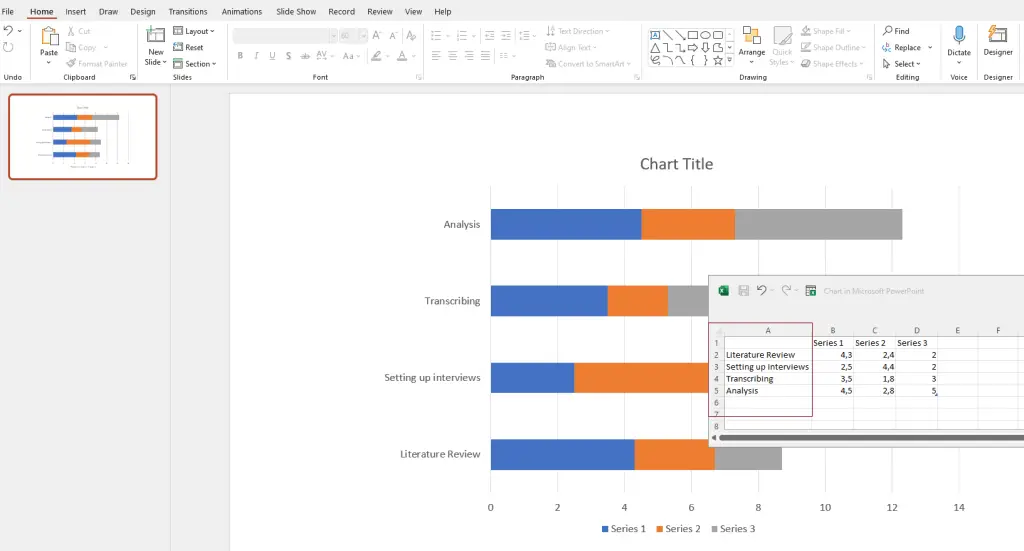
Next to the Categories (now tasks) column, you see three more columns: Series 1 , Series 2 , Series 3 . You can use these columns to showcase the length of tasks. Rename Series 1 into Start Date and Series 2 into End Date . Series 3 indicates the overall length. Depending on the timeframe you want to showcase, you can opt for instance for Length (weeks) or Length (months) .
In the example below, I decided to plan PhD tasks for a year. Thus, 1 means January, 2 means February, 3 means March and so forth. The length of tasks is also indicated in months:
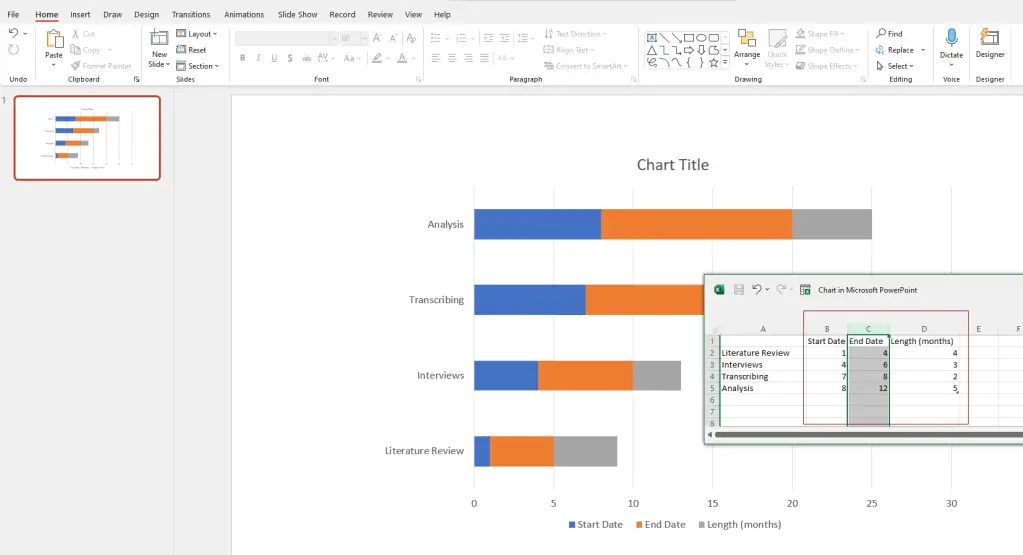
Next, click on your chart and three icons will appear in the upper-right corner next to it. Click on the bottom one, the Chart filters , remove the tick of the check box of End Date , and click on Apply. You will see that the bar chart will start to look like a Gantt chart:
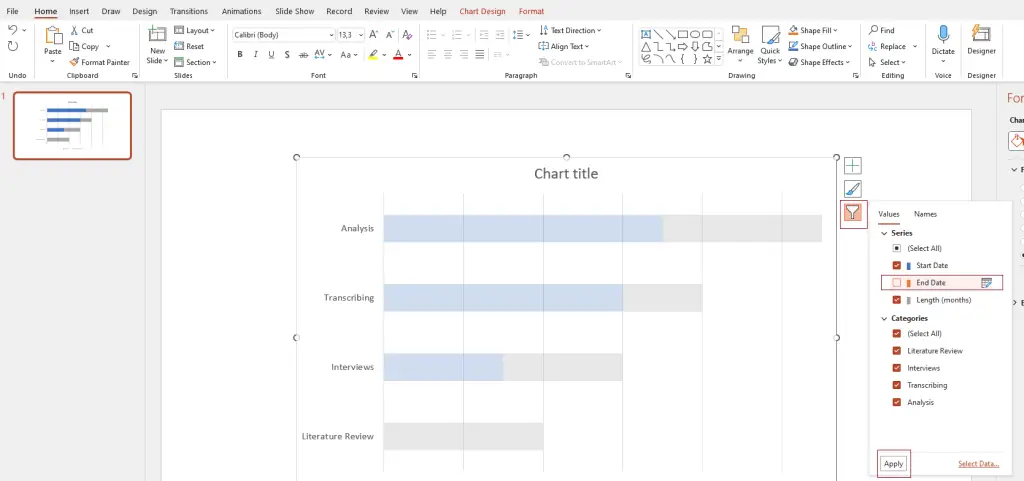
Now, the blue parts of the bar, indicating the Start Dates, need to be removed. Just click on one of them, and on the righthand side, Format Data Series should appear. Select No fill. Alternatively, in the upper menu, select Format , go to Shape fill, and select No fill .
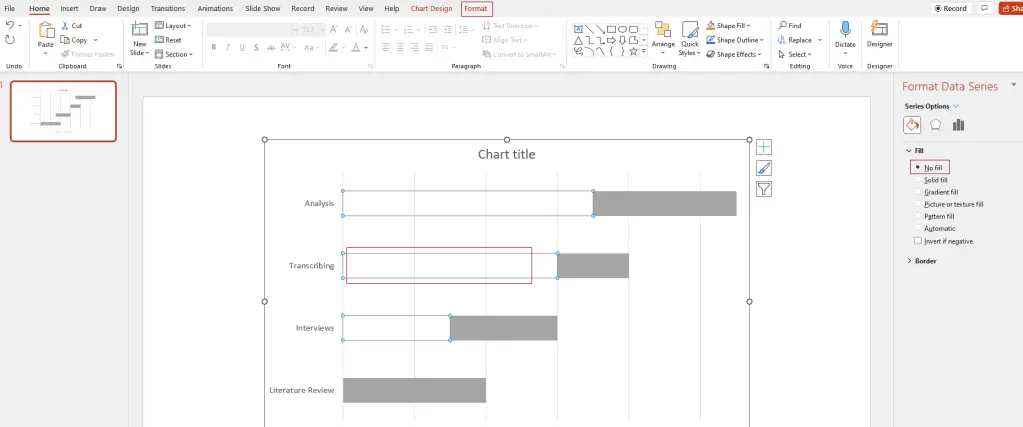
Now comes the fun part, namely decorating. You can add a chart title, colour the bars in the colour of your choice, edit the legend and the axis descriptions. Just play with it to explore the options.
One more thing I did was changing the value of the axis, because I want to illustrate the months of a year. Thus, it was a bit weird that the horizontal axis started with 0 and ended with 13 while I needed 1-12 to indicate each month of a year. You can simply change this by clicking on the axis. On the righthand side, Format Axis will appear. Go to Axis Options , Bounds , and enter 1 for Minimum and 12 for Maximum .
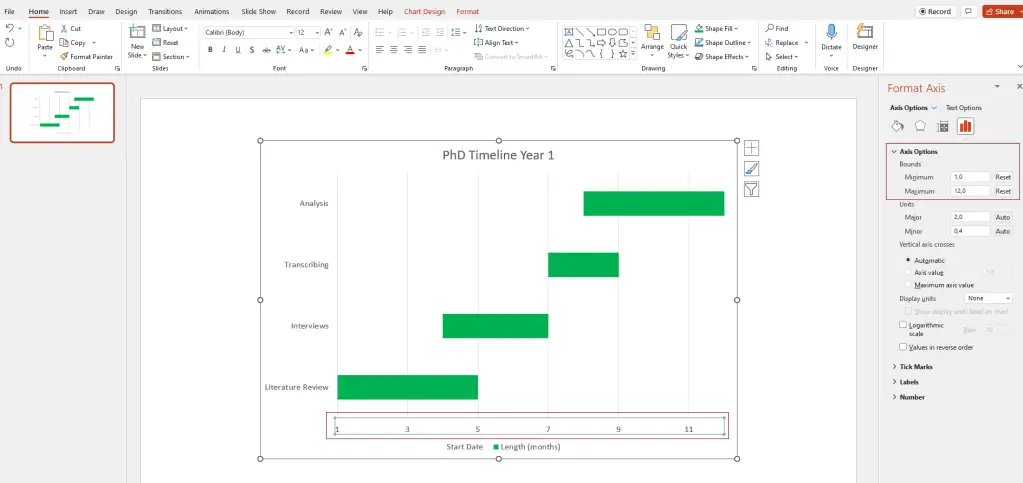
And voila! Your Gantt chart is ready.
The nice thing about learning how to create a Gantt chart in Microsoft PowerPoint is that you basically teaches you how to create one in a Word file as well! The process is very similar.
To start the process in Word, it is smart to first change the orientation of your page to Landscape . In the top menu, click on Layout , then select Orientation , then choose Landscape .
Next, select Insert , then Chart , and select a Stacked Bar chart again.
A basic bar chart will appear on your page:

Looks familiar? Yes! From here, it is basically the same process as editing the bar chart in PowerPoint.
If you don’t want to go through the hassle of creating your own Gantt chart but are not convinced by any templates, you can make use of online tools and software.
There are some paid providers out there, but in my opinion, it is not worth paying to create an awesome PhD timeline.
You can use a free provider (or make do with one of the many Gantt chart templates that exist on the internet). One free online tool is the Free Online Gantt Chart Software :
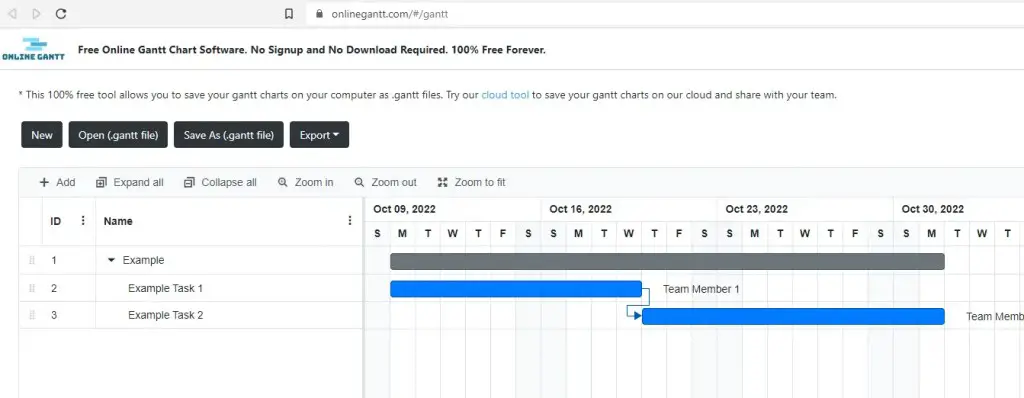
The site requires no signup. You can editing and simply start filling in the Gantt chart, and export it as an Excel, Image or PDF file when you are done!
PhD timeline Gantt chart templates
A great way to create a detailed Gantt chart in Microsoft Excel is by using Microsoft’s free Gantt project planner template . The level of detail and functionality exceeds those of simple, manually created Gantt charts. This makes this type of Gantt chart especially useful to track detailed PhD progress.
A useful Gantt chart template for PhD timelines in PowerPoint can be downloaded here via OfficeTimeline.com This Gantt chart is particularly great to provide a rough overview of plans over a longer period. For instance, with a few edits, you can illustrate a nice 3-year PhD timeline.
Useful Gantt chart templates for Microsoft Word can be downloaded here from TemplateLAB. I like these templates as they can be easily adjusted to the needs of a PhD timeline. For instance, a weekly Gantt chart template can be useful to establish a detailed plan with weekly objectives to keep your PhD progress on track.
PhD timeline Gantt chart examples
Using the template provided by Microsoft above, an example PhD timeline to track regular progress on tasks could look, for instance, like this:

Using the Gantt chart PowerPoint template by OfficeTimeline.com above, an example PhD timeline to present a plan for a 3 year PhD could look, for instance, like this:
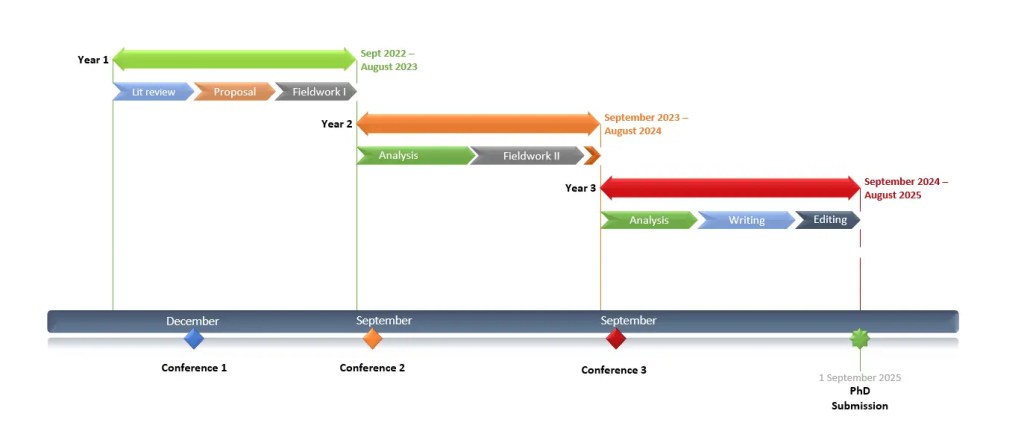
Using a weekly Gantt chart template from TemplateLab mentioned above, an example PhD timeline with weekly tasks and objectives could look, for instance, like this:
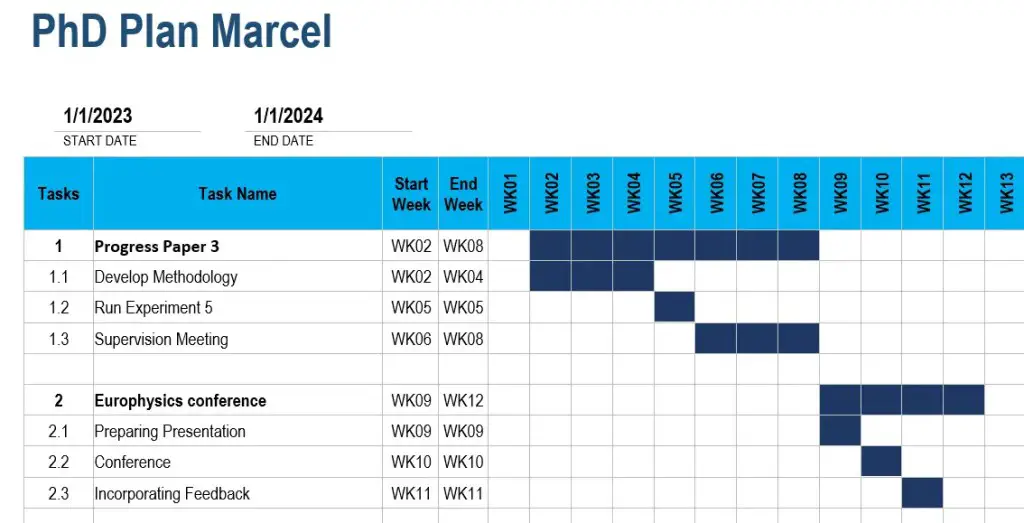
Master Academia
Get new content delivered directly to your inbox.
Subscribe and receive Master Academia's quarterly newsletter.
10 reasons NOT to do a master's degree
9 smart questions to ask a professor about graduate school, related articles.

10 tips on how to use reference management software smartly and efficiently

How to write a convincing research statement

How to disagree with reviewers (with examples!)

Introduce yourself in a PhD interview (4 simple steps + examples)

5 Types of GANTT Charts for PhD
“GANTT chart is so crucial for PhDs. It helps them to divide, manage and arrange their PhD goals. Universities seek one from every student. So what are those 5 types of PhD GANTT charts that every PhDs need? Let’s find out.”
A doctorate is the highest academic honor that every graduate is willing to achieve. Unfortunately, only some can manage to go for it. The journey of PhD is full of hurdles and hassles that students are often unaware about.
It’s more an honor and thus difficult to achieve too but not impossible, certainly. Scholars often get stuck, fail and eventually drop their PhD, because of the lack of a single basic thing– planning. Every PhD is similar– Everyone has to do research, that’s it.
However, it’s so true that doing research in some fields– like life science and biology or any other STEM subject – is quite hard and lengthy. But the sheer process is the same. Students fail because they fail to structurize their work.
So how can we greatly succeed in our PhD endeavor? The answer is simple— by planning your work– not in mind, on paper actually in your daily life, for a year and the entire tenure of PhD. That looks nearly impossible, right?
Planning your entire PhD, research work and writing assignments aren’t that difficult. Using a GANTT chart or preparing your own, you can manage all the stuff easily. You can design your goals and track them for your entire PhD.
In this article, I’m gonna explain 5 types of PhD GANTT charts that every PhD student should know about.
Stay tuned.
5 Types of GANTT chart for PhD
36 months gantt chart for phd , phd gantt chart for research , gantt chart for thesis writing , gantt chart for daily schedule, progressive research chart.
Every scholar must have a 36-months (3-year) GANTT chart for their PhD. And let me tell you that universities also ask for one. So you must have it. Usually, the ideal PhD duration is 3 years, though students can ask for an extension.
Along with their research project, universities ask to submit a fully planned GANTT chart for 3 years. In this planner, you have to enlist all your goals, research work, objectives and progress you would make each month.
You have to decide and draw how much time you would give to each assignment/task. And accordingly, you have to work. Major goals in this chart would be
- Course work
- Pre-research work
- Research work
- Post-research work
- Thesis writing
- Research paper writing
- Thesis submission.
Each goal has an individual task too— For instance, during the pre-research phase one has to prepare their PhD research title, synopsis, and research project and send them for approval. I have enlisted all goals, individual tasks and time required to achieve each in this GANTT template. Download it.
Preparing this chart will help you to monitor, assist and track your PhD progress in a real-time manner. Keep in note that this is a kind of goal-achiever chart, mark each goal as “complete” you achieve.
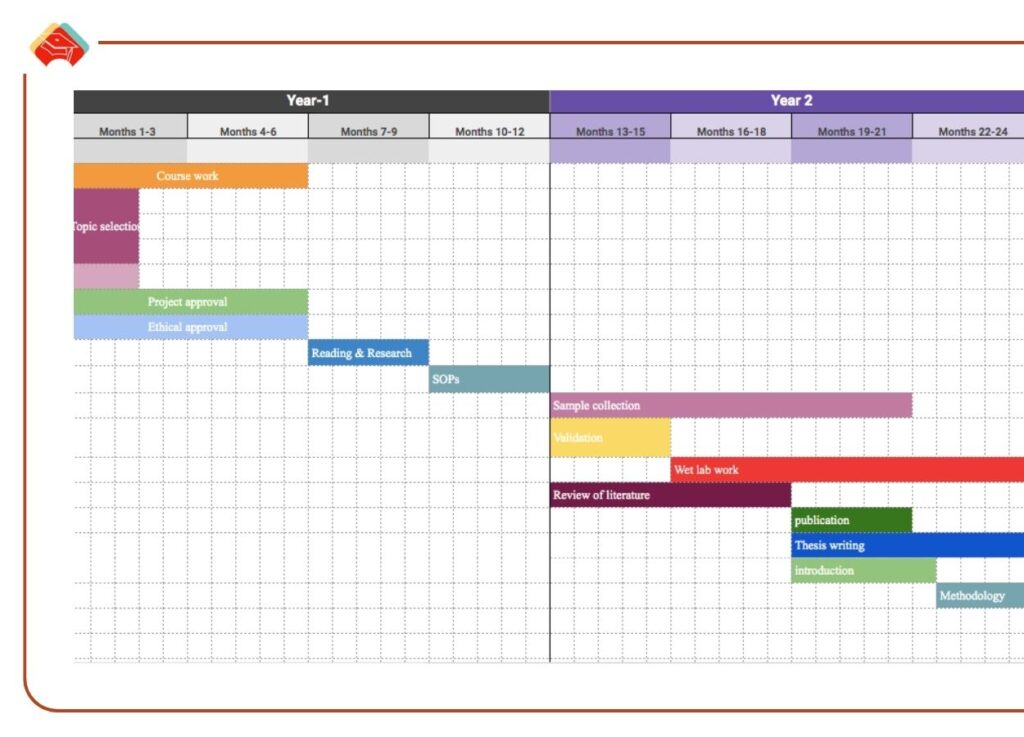
Research has been such a crucial parameter in PhD. Every research starts with sample collection and ends with data collection. The stepwise process of PhD research included many other important steps.
One trait of research is ‘uncertainty’. Research is a highly unpredictable process, no one, literally– no one can predict the results and define the time frame. However, you have to make a time frame for your research.
Put simply, you have to allot time to every research goal, which certainly increases the probability of maximizing your chances of success. So what should be the process here?
Divide your research process into steps (our previous article will help with this). Understand the importance of each research goal and accordingly allot time. For example, 6 months for sample collection or 3 months for validation, etc.
Then go to the GANTT chart planner and prepare a chart for a research goal against the time required. You can also add other elements like real-time monitoring, color code and progress graph. That’s totally up to you.
Here I have one for you. Please visit it and download it.
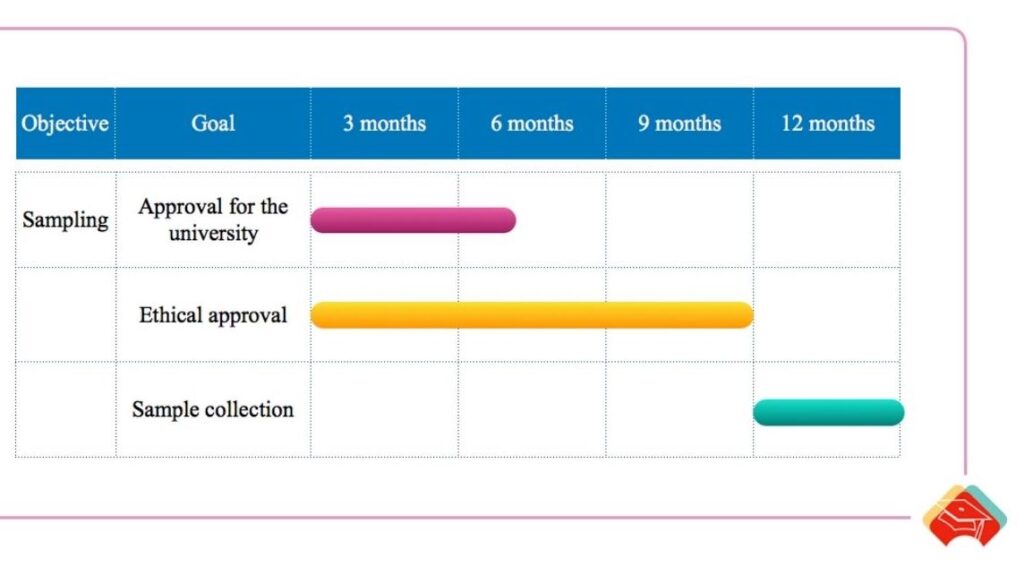
This PhD research planner template would increase your chances of success.
Yet another crucial goal of any PhD is thesis writing, and it should progress simultaneously with your research. Meaning, you should have to write in your free time during/while you do lab research.
PhD thesis is a mountainous task of writing 200 pages– structured and organized assignment. Common thesis parts are– the introduction, review of literature, methodology, results and discussion, interpretation and references.
Besides many other things are also included in the thesis, to know more read this article— How to Write a PhD thesis?
As we aforesaid, research is an uncertain process but not writing. You can manage and control your PhD writing assignments by only preparing a single GANTT chart. Note that writing for PhD takes a huge proportion of your time.
So planning for writing a thesis is crucial too. Prepare a chart for thesis writing goals against the time required– For instance, 2 months for introduction, 7 months for review of the literature and so on.
Give each writing goal a different color and monitor the progress. Check out this GANTT chart for more detail.
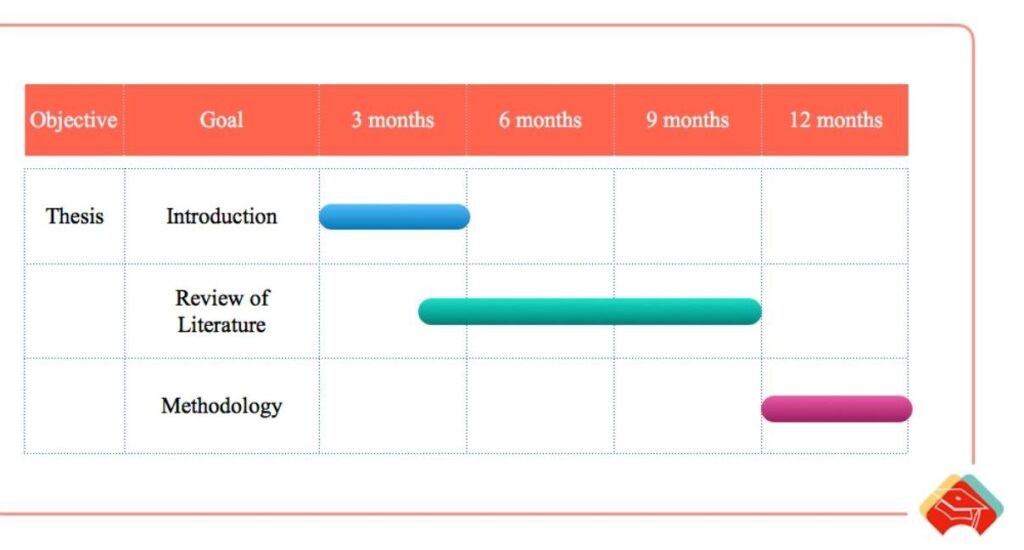
What is the ultimate goal of any research scholar? To achieve the PhD degree, right? No. it’s to achieve the PhD degree in a given time. I.e. in three years. Hence, to complete such a huge task in a given time frame you have to manage things at a micro-level.
Zero-date planning and micro-management help you to get success in a quick time. Now, you may wonder how it’s possible. The simple answer is by planning every day, 365 days of the year 1,095 days of the entire tenure.
My ultimate advice to every PhD student who wishes to succeed in their research is to prepare and manage your daily schedule. The importance of a daily schedule and how to manage it is explained in our previous article, here it is— What should be a daily routine for PhD Students? Our proven checklist .
Plan your day on an excel sheet in the form of a GANTT chart. Try hard to follow it every day and you would see magical results in the long run. Daily planning (using this simple GANTT chart) helps every one of our PhD research students.
Prepare your daily schedule– activities you are doing, want to do and you have to do, give it a specific time and stamp it in the form of a chart. The fun part is you can use different colors to track your activities.
For example, Read if fails to achieve a goal or green for achieved goals. Take a quick look at one of my student’s GANTT daily charts.
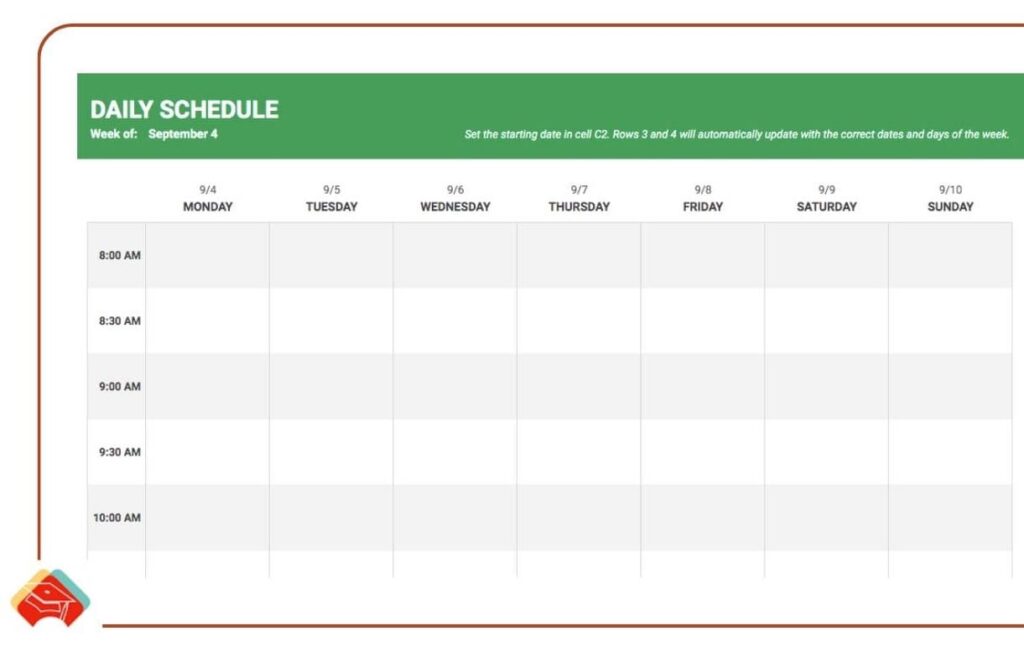
Every PhD should have a progressive research chart there on their PhD. You have to lead it and apply to monitor how much progress you have done in your semester or in a year. It’s progressive means you have to update your goals, otherwise, it will consider it as “failed” and mark it as unachieved.
I plan to prepare one progressive and real-time chart, when you set a start and end date, it starts the tik-tik toward a deadline. I will update it later in this article.
Wrapping up
After reading all these, you wonder if it’s difficult to prepare all this stuff and manage. Let me tell you that you do not need to waste your time on such things. Just focus on your research. We already have “ready-to-use templates” in a single place.
Please visit this page to access a single or all GANTT chart. You can use it. I hope you like this article. Please share it and don’t forget to check out our templates.

Dr. Tushar Chauhan is a Scientist, Blogger and Scientific-writer. He has completed PhD in Genetics. Dr. Chauhan is a PhD coach and tutor.
Share this:

- Share on Facebook
- Share on Twitter
- Share on Pinterest
- Share on Linkedin
- Share via Email
About The Author

Dr Tushar Chauhan
Related posts.
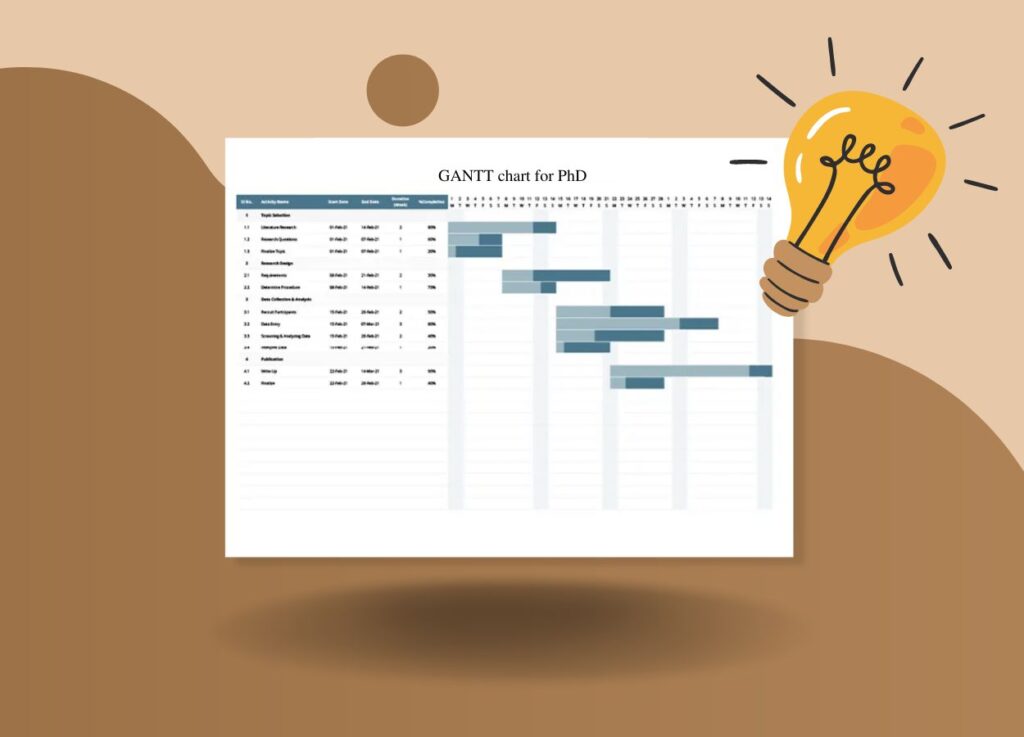
10 Amazing Benefits of GANTT chart for PhD
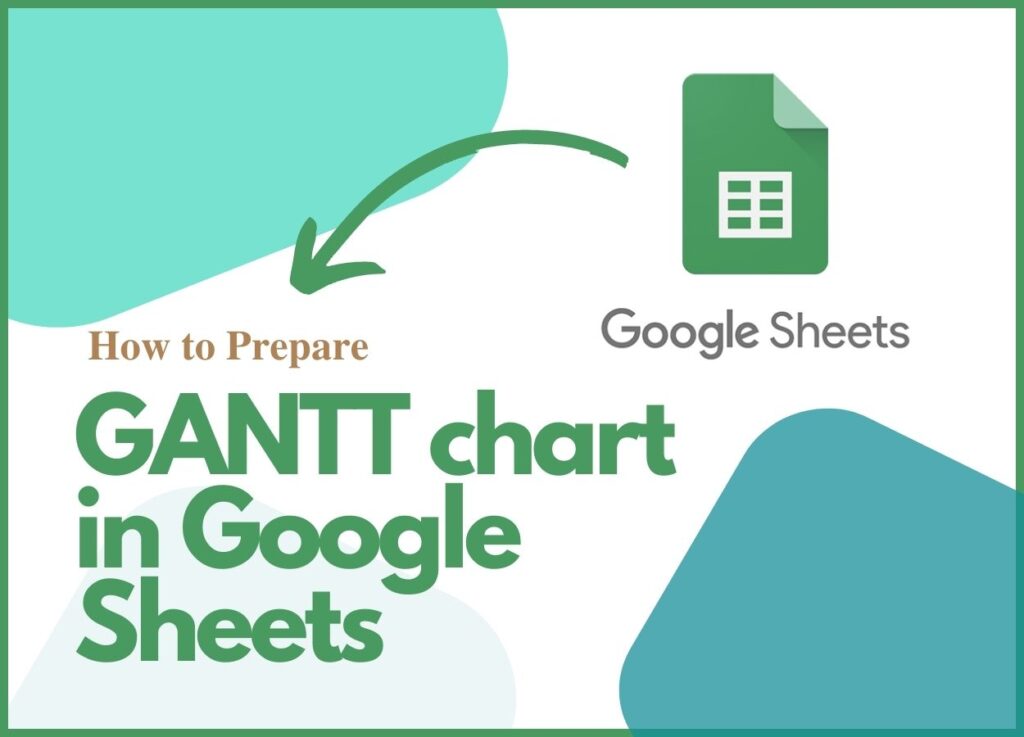
How to Prepare a GANTT chart in a Google Sheet?
Leave a comment cancel reply.
Your email address will not be published. Required fields are marked *
Save my name, email, and website in this browser for the next time I comment.
Notify me of follow-up comments by email.
Notify me of new posts by email.
Site Search
Academic calendars, undergraduate & graduate program calendars.
Academic schedule for all undergraduate and graduate programs, including individual dates for the Kent School of Social Work, School of Nursing and the J.B. Speed School of Engineering.

Professional Program Academic Calendars
Dmd program, registration schedules.
Important registration events, like course registration and drop/add dates are maintained by the Office of the Registrar.
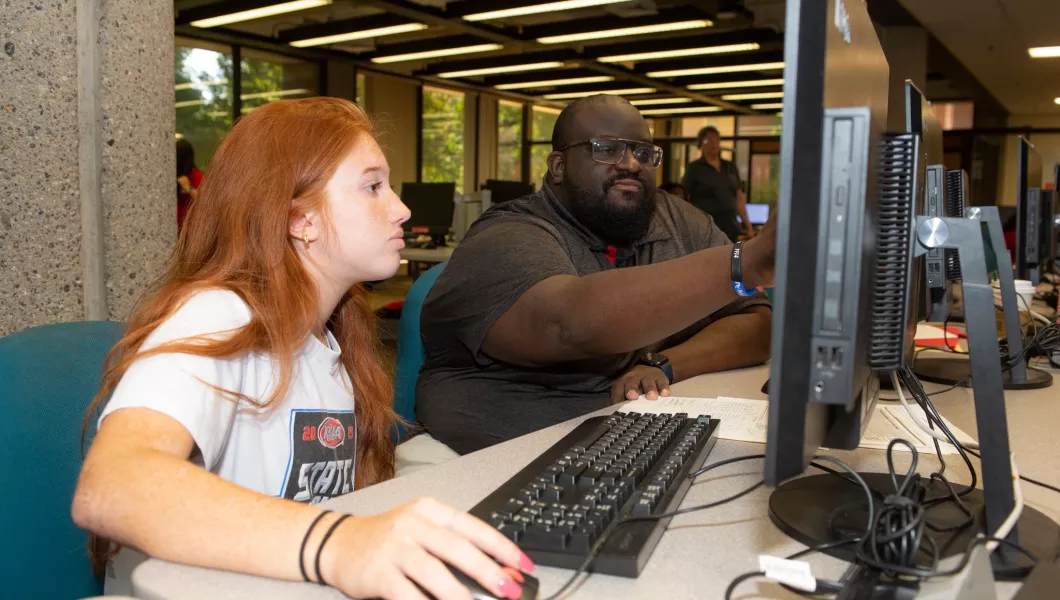
Final Exam Schedules
Dates and times for final exams are maintained by the Office of the Registrar.

University Calendars

IMAGES
VIDEO
COMMENTS
Here is the standard daily routine process we advise our students to follow. This work, and will work for you. Stay tuned with this content, it will certainly change your PhD journey. A Daily Routine for PhD students: The 7+8= 6 formula. Your daily planner. Parkinson's law. Balance reading, writing and research.
Example: Planning year 2 of a 3-year PhD. Maria completed her first round of data collection according to plan, and starts the second year of her PhD with a lot of material. In her second year, she will focus on turning this data into two journal articles. Months 1-2: Maria works on her data analysis.
A PhD schedule takes adjustment, but the strategies that work for doctoral studies carry throughout an academic career. Adjusting to a PhD schedule can be a challenge. Classes will take up a decent amount of your time for the first few years of a program. After completing the required courses, independent research becomes the main focus.
Depending on your schedule, this might be across a full week or a few days. Universities rarely impose a number or pattern of work hours on PhD students, so it'll be up to you to manage your time effectively. Most of the time, attendance is to do with regular meetings, set departmental deadlines and timely submission of written work.
Guidelines for how to make & use the timeline throughout your PhD. 1. Example & download: I draw below an example for the institute where I did my PhD: the Institute of Biology at the University of Fribourg in Switzerland. Therefore, it is designed for a 4-year PhD program with annual committee meetings and for students who spend a lot of time ...
A PhD research plan or schedule can be prepared using the GANTT chart which includes a month, semester or year-wise planning of the entire PhD research work. First, enlist goals and objectives. It's not about your research objective enlisted in your proposal. I'm talking about the objectives of your PhD.
A daily routine is crucial for PhD students, as it helps to manage the various demands of graduate school and maintain a healthy work-life balance. A well-organized schedule allows you to prioritize tasks and responsibilities, making it easier to stay focused and avoid feeling overwhelmed. In addition, having a consistent routine can help you ...
The Pomodoro Technique is a time management method designed to help you maintain focus and productivity. It involves working in short, intense bursts (usually 25 minutes), followed by a short break. For a busy PhD student, this technique can be particularly helpful during long study sessions or when doing never-ending "desk work."
A 2022 Nature survey found that 70% of graduate students work more than 40 hours per week and that 68% have ... To-do lists save you from having to schedule every minor task and can help to remind ...
Create a schedule and take careful note of class and dissertation deadlines so you can set a schedule and stick to it. Your chances to succeed in any PhD or doctoral degree program increase when you are prepared from the inquiry stage to life after. These tips will help you survive—and even thrive—in graduate school.
Elements to include in a 3-year PhD timeline. The initial stage in this timeline typically involves coursework, often lasting one year, where the student engrosses themselves in advanced study in their chosen field. Once the coursework is done (USA PhDs), they focus on proposing, conducting, and presenting their initial research.
A typical PhD student schedule involves turning up to the Department between 8 AM and 9 PM, and performing research activities during the day such as reading, writing, analyzing and reporting on literature and experiments. The schedule of a PhD student also changes depending on the culture in your research group.
The first two years of a PhD program are mainly made up of classes and the beginning stages of research. Deborah Small, the doctoral coordinator for the Marketing program, said, "It starts with heavy duty coursework and a lot of specific requirements. At the end of your first year, there are qualifying exams on all the core marketing courses.
Step 1: Decide when your day will end. Yes, the first thing to decide is when you're going to stop working. That gives you the information on how many hours you have available to work, and how much time you'll have available in the evening to do something else. Step 2: Plan your breaks.
Conclusion: The PhD Planner for Proactive Productivity (2023-2024) appears to be a comprehensive tool designed to cater to the multifaceted needs of PhD students. By offering a blend of structured planning and personal well-being features, it stands out as a valuable asset for anyone navigating the challenging waters of doctoral studies.
The Gantt chart is a technique I learned in graduate school when I took project management courses. This is a hypothetical Gantt chart for my doctoral student, covering about 15 months. What I suggested to her was to use backcasting techniques to plan backwards from her goal (PhD thesis defense) to intermediate goals.
The first step in organizing your PhD work is to set clear goals for yourself. Define the objectives of your research. Develop a clear and realistic plan for your PhD work, including milestones and deadlines for each task. 2. Develop a research plan. Once you have set your goals, develop a research plan that.
The simple answer is yes, you can work while studying a PhD and in fact, many do. The most common form of work is teaching during your PhD. But some students may also have part-time (or full-time jobs outside of the university). Depending on the amount of work you plan to undertake, you will have to consider whether it would be better to do ...
Manually creating a PhD timeline Gantt chart in PowerPoint is a bit easier than in Excel. Therefore, I will explain the process here. First, you need to open a blank PowerPoint slide. Then click on Insert (1.), then Chart (2.). A popup will appear.
7 stages of the PhD journey. A PhD has a few landmark milestones along the way. The three to four years you'll spend doing a PhD can be divided into these seven stages. Preparing a research proposal. Carrying out a literature review. Conducting research and collecting results. Completing the MPhil to PhD upgrade.
GANTT chart for daily schedule; Progressive research chart; 36 Months GANTT chart for PhD . Every scholar must have a 36-months (3-year) GANTT chart for their PhD. And let me tell you that universities also ask for one. So you must have it. Usually, the ideal PhD duration is 3 years, though students can ask for an extension.
Academic schedule for all undergraduate and graduate programs, including individual dates for the Kent School of Social Work, School of Nursing and the J.B. Speed School of Engineering.